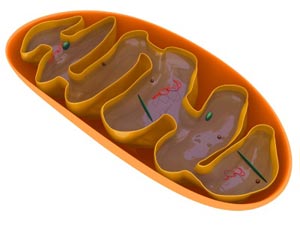
Mitochondria – cellular “power plants” that contain their own DNA (mtDNA) – are passed down directly from mother to child, which makes it possible to construct evolutionary “trees” illustrating the relatedness among human lineages.
To explore how variations in mtDNA have evolved, David Samuels and colleagues combined detailed human mtDNA trees with calculations of how pathogenic (or detrimental) a single amino acid change to the 13 mtDNA-encoded proteins would be (represented by a “pathogenicity score”).
In the April 8 American Journal of Human Genetics, they show that variants with high pathogenicity scores are rarer in older branches of the tree (they are evolutionarily selected against). Variants that appear multiple times in the tree had significantly lower pathogenicity scores than those that appear only once. The investigators also compiled a list of all possible amino acid variations and their pathogenicity scores, generating a tool that can be used to evaluate mtDNA variants and mutations associated with mitochondrial diseases, aging and cancer.
The research was funded by the Portuguese Foundation for Science and Technology (FCT).
















